Explore the Wonders of Wolf Tree Train! Discover the natural beauty and fascinating history of the Wolf Tree Turn with the Skunk Train!
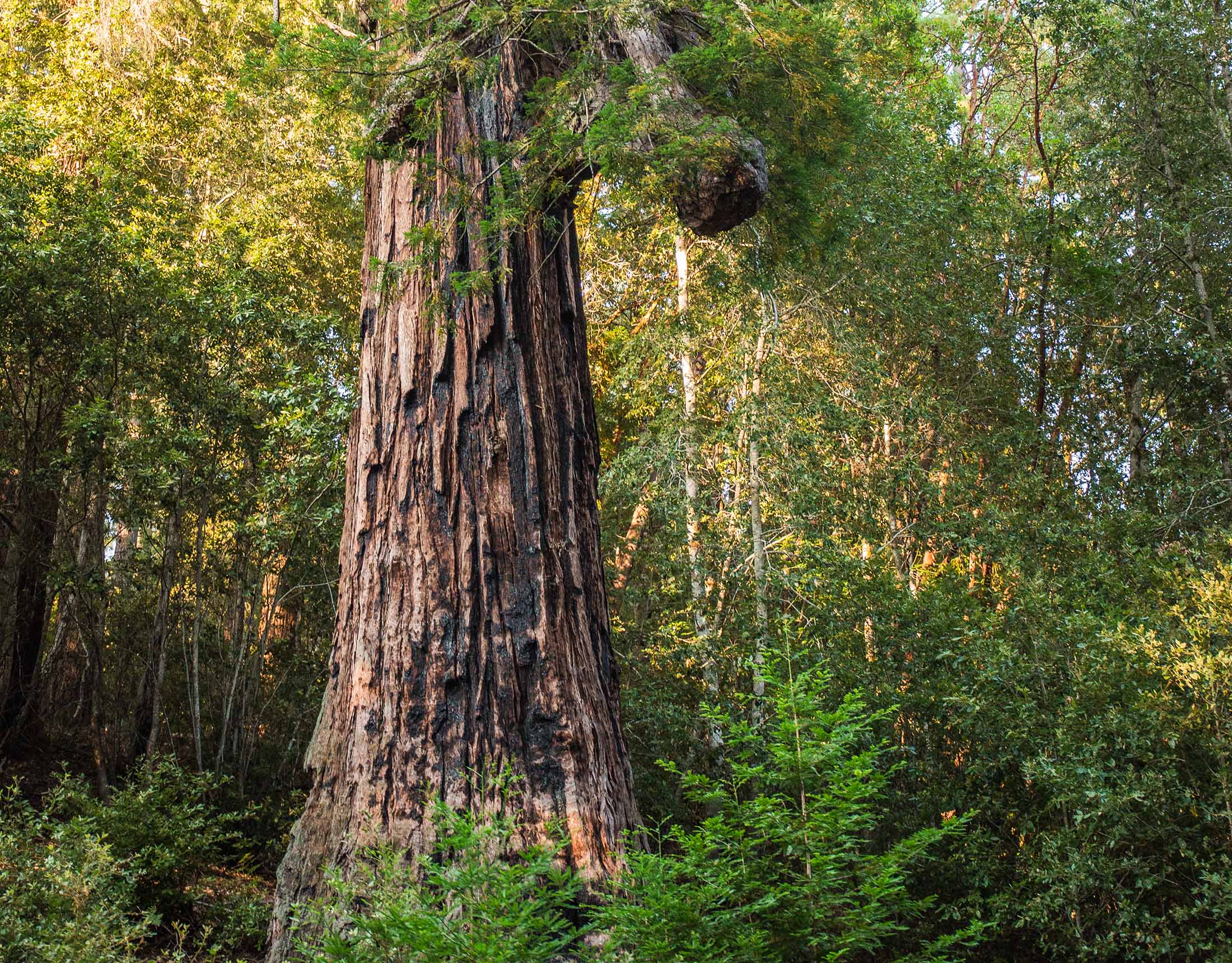
Wolf Tree
Wolf Tree
One of the oldest redwood trees visible on our railroad. The charring on the trunk, indicates that this tree has been struck by lightning MANY times in the past. The lightning strikes have also caused the branches to grow in unusual ways, compared to other redwoods near it, it very unusual.
Wolf Tree
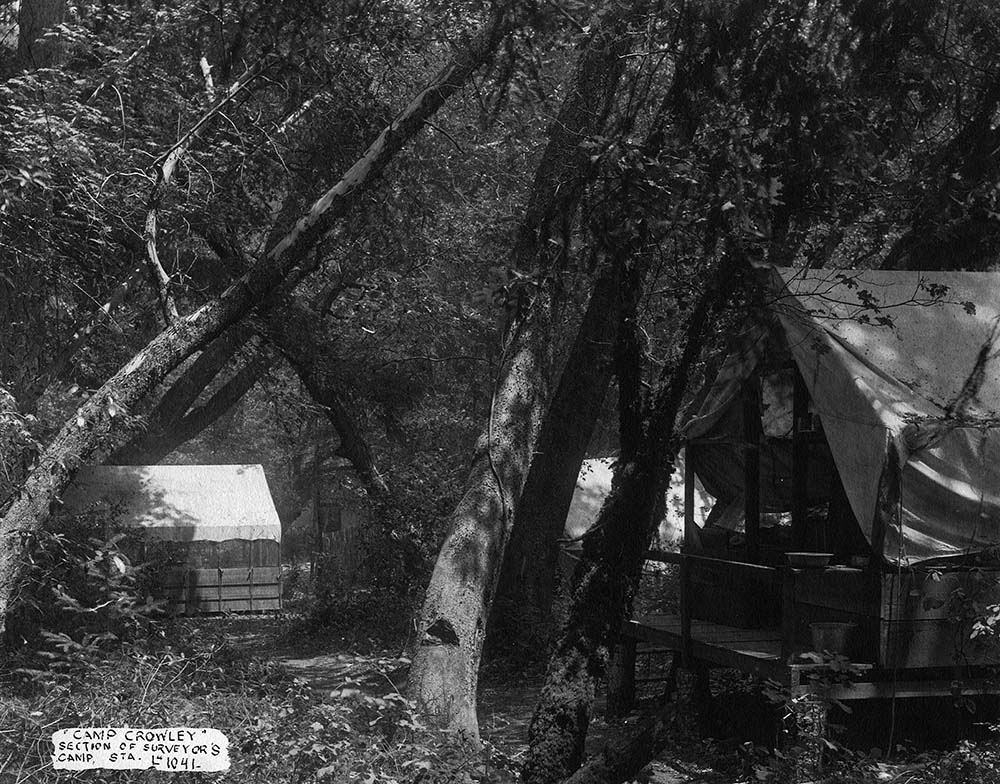
Our History
Our History
The Skunk Train began operation in 1885, with the first railroad equipment arriving in Fort Bragg by ship. Its main purpose was to transport logs from the woods to the mill in Fort Bragg, where they were processed into lumber and shipped to San Francisco by steamship.
Our History
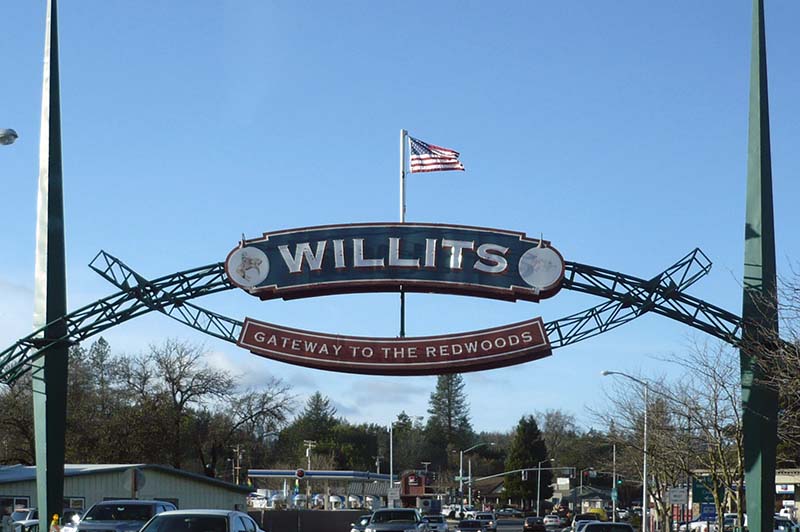
Willits Arch
Willits Arch
This arch may look familiar to some of you as this arch was originally located in “The Biggest Little City in the World” & donated to the City of Willits in 1995 by Reno, Nevada. The City of Willits replaced the original plastic letters, star, & slogans. Making the arch its own with the Willits slogans "Gateway to the Redwoods" & "Heart of Mendocino County".
Willits Arch

The Climb
The Climb
During the climb the locomotive really starts working hard. Climbing the steepest grade on the entire railroad! This is a 3 ½ percent grade, which doesn’t sound like much, but is extremely steep for a train! At the top of the grade is Summit which sits at 1,750 ft above sea-level & is the highest point on the entire railroad. Once cresting the top, you will immediately head downhill & through one of our tunnels.
The Climb

Tunnel #2
Tunnel #2
Is the only tunnel the Wolf Tree Turn trip passes. Completed in 1911 Tunnel #2 is 812ft long!
Tunnel #2
Crowley
Crowley
Historically, Crowley was a minor logging camp – but not without its quirks. The Frenchman who owned the camp reputedly had a deep love of tennis, and he actually had special clay brought in to construct his own court on the site. The lumber camp here lasted in a dormant state well into the modern era, with the foreman’s house, a mess hall, and five worker bunkhouses remaining intact until recently. Now it is the stop on our Wolf Tree Turn line, with picnic tables and hiking to enjoy.
Crowley
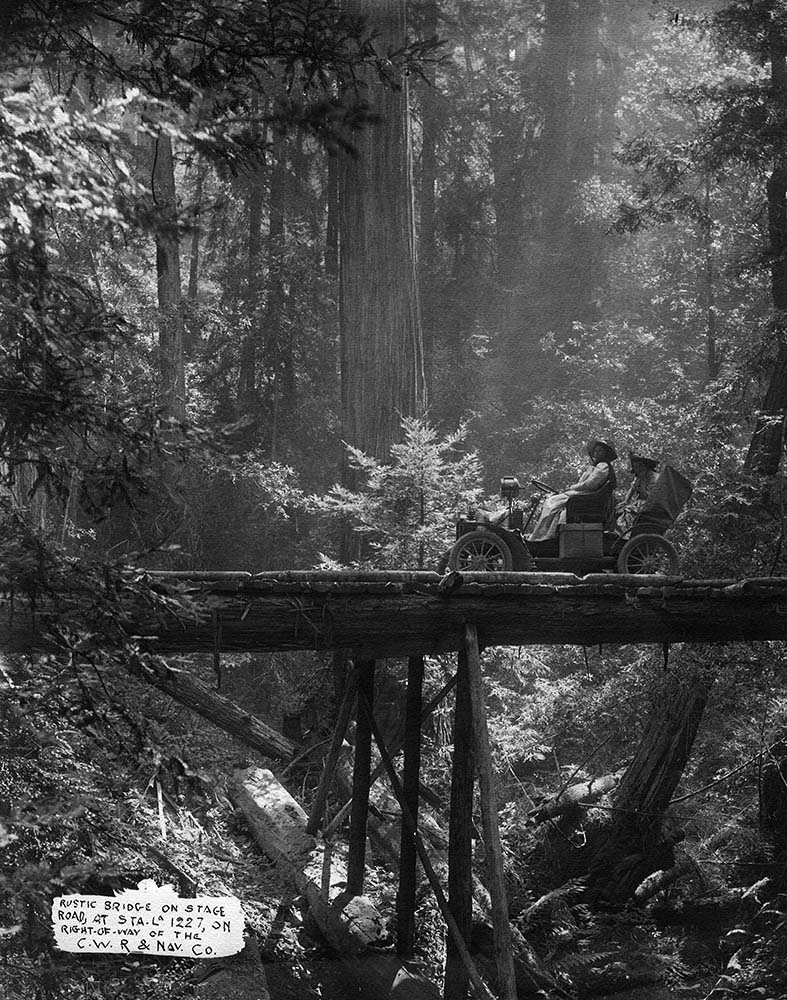
Passenger Service
Passenger Service
Passenger service for the Skunk Train started in 1904, but it didn't reach Willits until 1911. Before that, passengers traveling to Willits would ride out from Fort Bragg to various small towns along the line, stay the night in a hotel, and continue their journey the next day by stagecoach.
Passenger Service
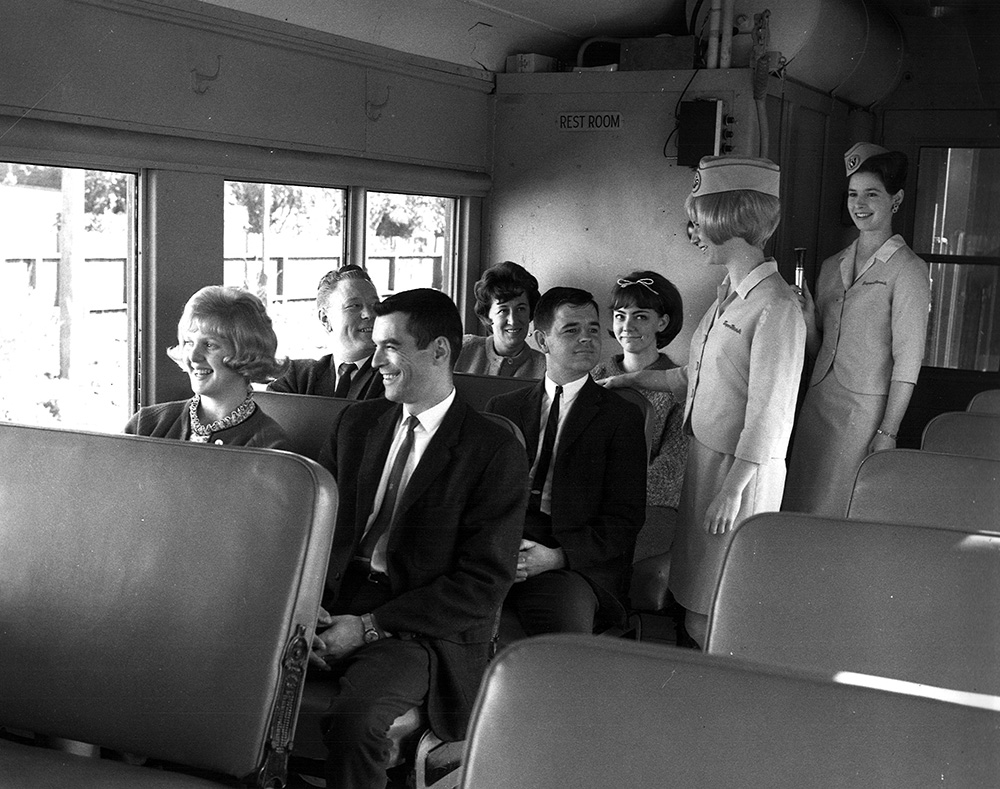
After 1911
After 1911
In 1911, the train finally reached Willits, reducing the travel time significantly. From there, passengers and freight could continue their journey north and south with the Northwestern Pacific Railroad, extending the reach of the Skunk Train by rail.
After 1911
Mail Service
Mail Service
The Skunk Train held the distinction of being the last railroad to deliver mail six days a week under a federal contract until September 15, 2003. This historical feat landed the Skunk Train a spot in the Smithsonian.
Mail Service
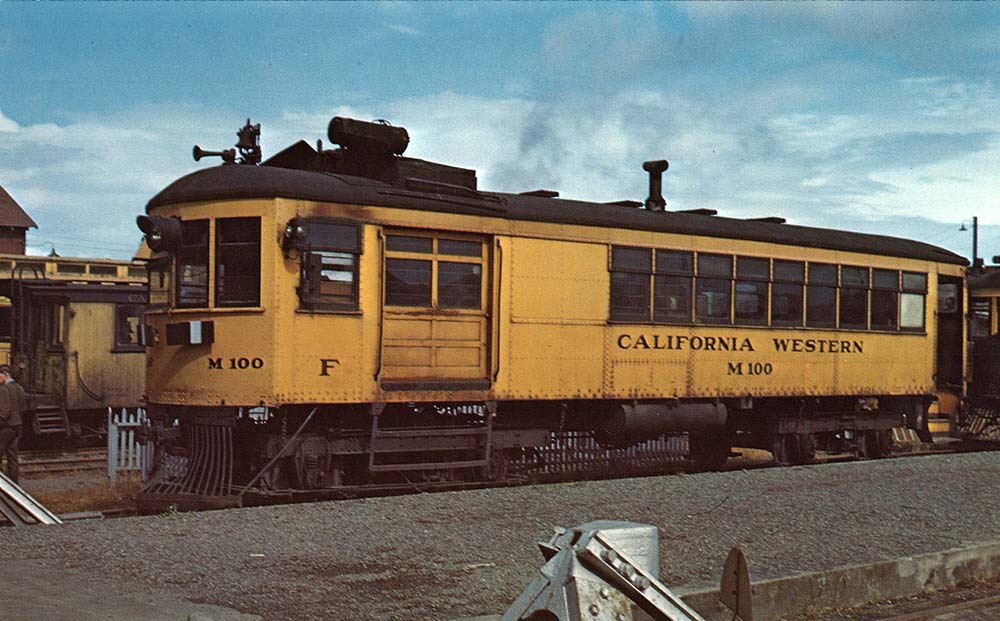
The Friendly Train Called "Skunk"
The Friendly Train Called "Skunk"
In 1925, the Skunk Train transitioned from steam locomotives to self-propelled railcars known as "Motorcars." Locals started calling them "Skunks" due to the pungent odor produced by the gasoline engine and oil-burning potbellied stove on board.
The Friendly Train Called "Skunk"
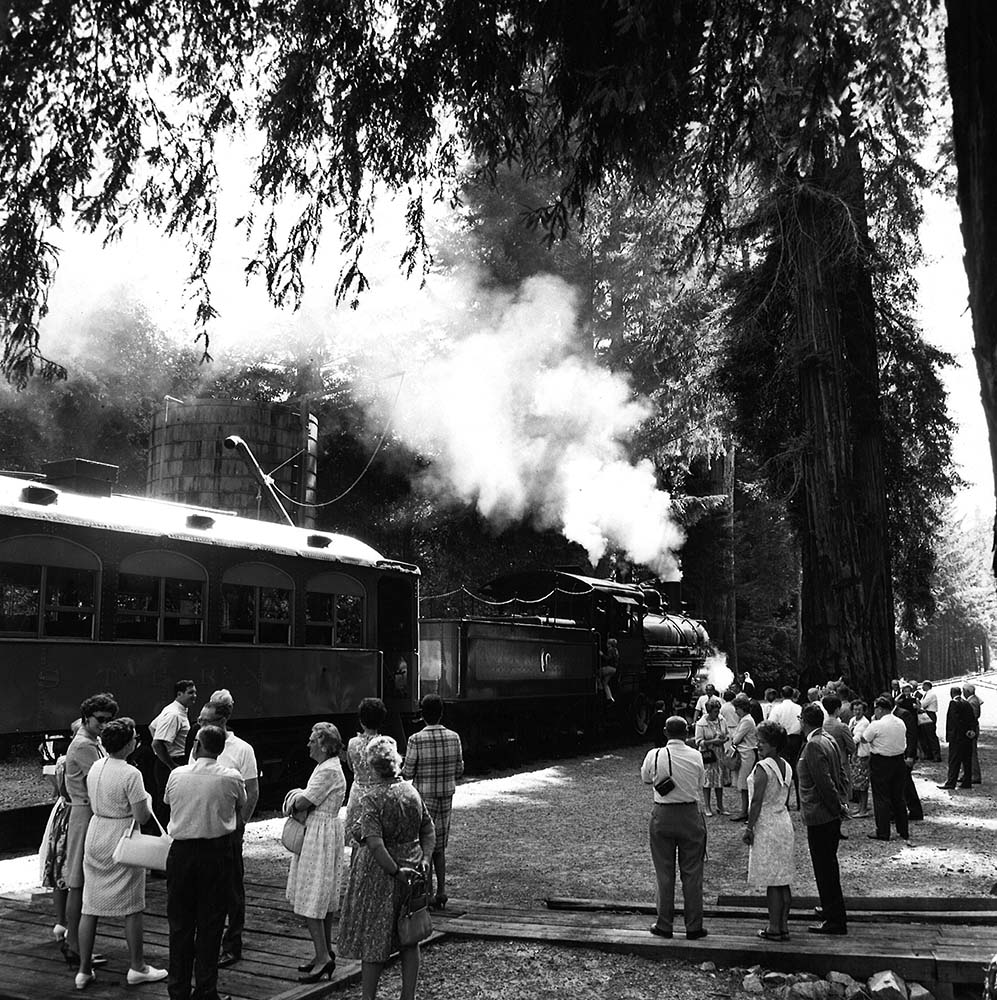
National Geographic
National Geographic
The name "The Friendly Train Called Skunk" gained popularity after National Geographic featured an article on the Skunk Train in May 1959. Since then, the name stuck, and the train has been known as the Skunk Train.
National Geographic
Our Tracks/Facts
Our Tracks/Facts
Learn about the Skunk Train's tracks, bridges, and curves that make it the "crookedest railroad in the west."
While on the train passengers see some standing water, they also see some very large leafed plants sprouting out of the water. Believe it or not, these plants are known as “Skunk Cabbage”. While they do not normally smell, if disturbed; just like a skunk, they can produce a pungent odor. These plants love wet, moist areas, as do Redwoods and many other flora in the area. This forest is technically a temperate rainforest, with rainfall reaching around 70 inches some years.
While on the train passengers see some standing water, they also see some very large leafed plants sprouting out of the water. Believe it or not, these plants are known as “Skunk Cabbage”. While they do not normally smell, if disturbed; just like a skunk, they can produce a pungent odor. These plants love wet, moist areas, as do Redwoods and many other flora in the area. This forest is technically a temperate rainforest, with rainfall reaching around 70 inches some years.
Our Tracks/Facts
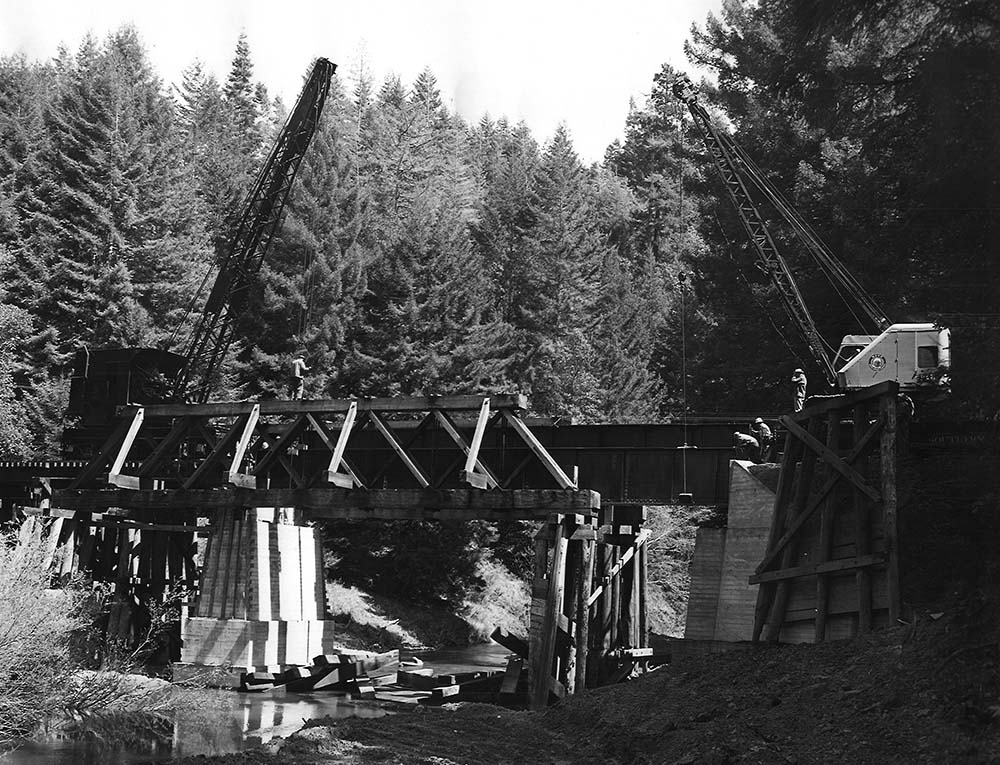
Bridges & Trestles
Bridges & Trestles
When construction of our railroad was completed in 1911 we had 115 bridges & trestles over our 40-mile route between Fort Bragg & Willits. Over the years as many logging camps, towns, & mills started to disappear we would remove many side tracks than ran up the canyons & creeks along our line. This eliminated the need to pass over the water so frequently, because of this we now have 32 bridges and trestles.
Bridges & Trestles
Curves
Curves
We have a lot of curves. In fact, between Fort Bragg & Willits we have 381 curves. That is 381 curves in only 40 miles of track! Our longest section of straight track is a little less than 1 mile in length. If you were to have ridden out of Willits, you would have crossed a section of track that takes you 8 ½ miles of winding around sharp curves on a steep mountain pass, to go only a straight-line distance of 1 ½ miles!
On a couple of these curves, if you were headed West towards Fort Bragg, it would curve you 180 degrees around the side of the mountain until you end up facing the opposite direction you were trying to go!
The Skunk Train is now known to be the “crookedest railroad in the west” and possibly even the entire world now. Many other railroads claimed to be the crookedest, but they no longer exist, therefore it is very likely that the Skunk Train is in fact the crookedest railroad in the world!
On a couple of these curves, if you were headed West towards Fort Bragg, it would curve you 180 degrees around the side of the mountain until you end up facing the opposite direction you were trying to go!
The Skunk Train is now known to be the “crookedest railroad in the west” and possibly even the entire world now. Many other railroads claimed to be the crookedest, but they no longer exist, therefore it is very likely that the Skunk Train is in fact the crookedest railroad in the world!
Curves
Equipment
Equipment
Some of you may be interested to know more about the equipment we are using today.
Equipment
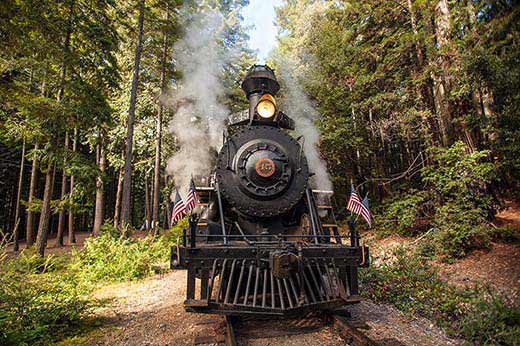
Steam Locomotive #45
Steam Locomotive #45
Was built in 1924 by the Baldwin Locomotive Works for the Brown-Lee Lumber Company in Medford, Oregon. #45 came to work at the Skunk Train in 1964 & has been in operation with us ever since.
Steam locomotives are classified by their wheel arrangements in numbers of wheels, in this case 2-8-2. #45 has 2 pilot wheels, 8 driving wheels, then 2 more trailing wheels under the cab, therefore, the classification of 2-8-2.
2-8-2 is often referred to as “Mikado”. In 1897 the Baldwin Locomotive Works were commissioned to build many 2-8-2 locomotives for a Japanese Railway. In 19th Century Japan, the Emperor was often referred to as “Mikado” which is an old-fashioned name for “Emperor of Japan”. #45 was always designed to burn oil for fuel. Originally designed to burn “bunker c” oil, which is a thick slurry of oil that had to be pre-heated to thin it enough to be fired. Today, #45 burns recycled motor oil. #45 operates with a boiler pressure of 170psi, weighs 118 tons, & has a tractive effort of 30,000-foot-pounds.
Steam locomotives are classified by their wheel arrangements in numbers of wheels, in this case 2-8-2. #45 has 2 pilot wheels, 8 driving wheels, then 2 more trailing wheels under the cab, therefore, the classification of 2-8-2.
2-8-2 is often referred to as “Mikado”. In 1897 the Baldwin Locomotive Works were commissioned to build many 2-8-2 locomotives for a Japanese Railway. In 19th Century Japan, the Emperor was often referred to as “Mikado” which is an old-fashioned name for “Emperor of Japan”. #45 was always designed to burn oil for fuel. Originally designed to burn “bunker c” oil, which is a thick slurry of oil that had to be pre-heated to thin it enough to be fired. Today, #45 burns recycled motor oil. #45 operates with a boiler pressure of 170psi, weighs 118 tons, & has a tractive effort of 30,000-foot-pounds.
Steam Locomotive #45
Coaches 690 Series
Coaches 690 Series
The coaches located on the train were built 1919 for the Erie Lackawanna line that operated mostly in the Northeasten states of the U.S.
Coaches 690 Series
101101 Flatcar
101101 Flatcar
We also have our open-air Observation car. This car is an old freight flatcar that was built in 1947 for the US Marine Corps to haul Sherman tanks shortly after WWII. Sherman tanks weigh about 40 tons each but are relatively short in length and width, so they could fit more than 1 tank on this car.
101101 Flatcar
Coaches 650 Series
Coaches 650 Series
The coach of the train (with the round style roof(s)) was/were built for Southern Pacific Lines in Southern California built in the late 1920s.
Coaches 650 Series
